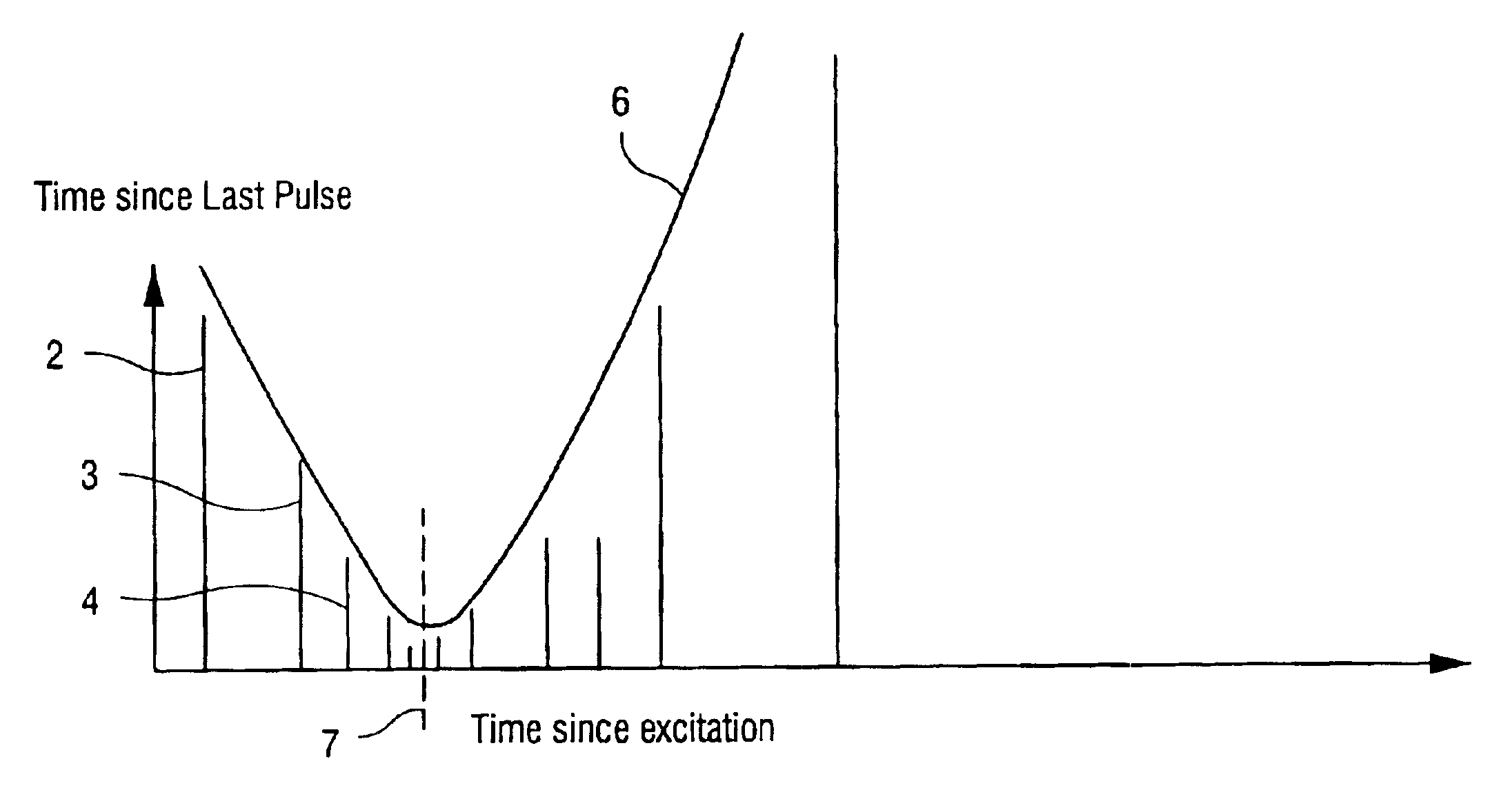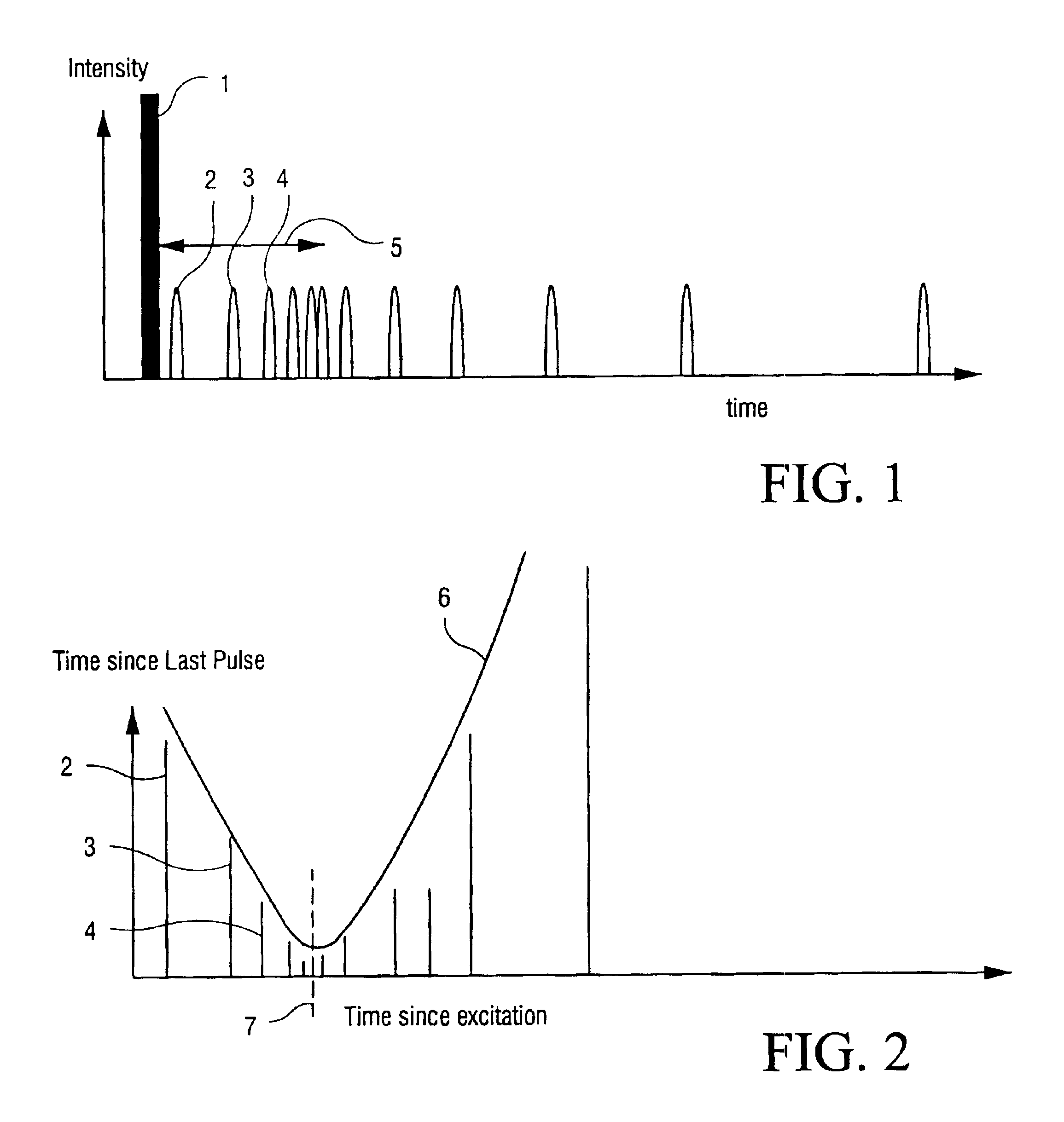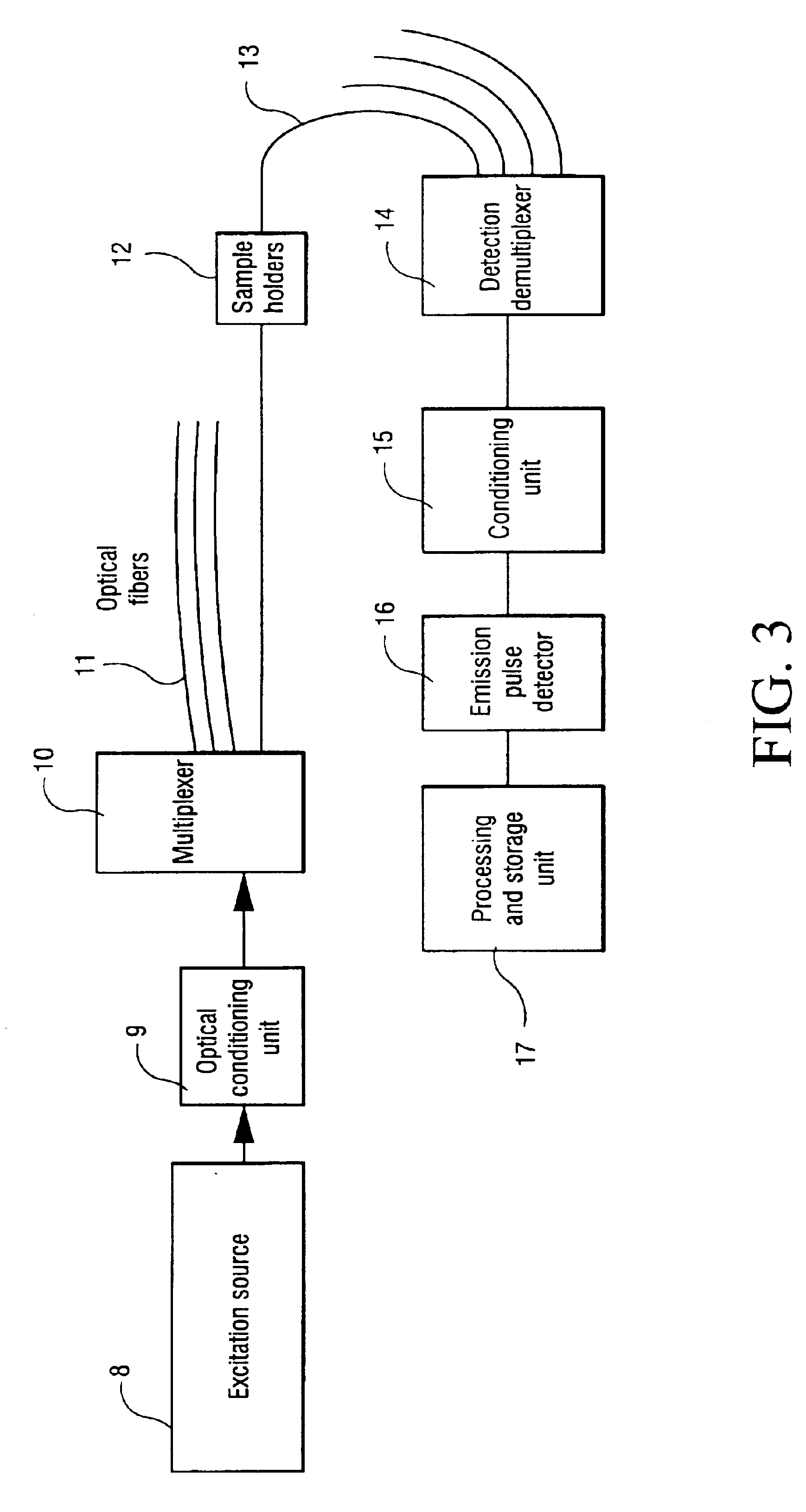Response assessment
a technology of response and assessment, applied in the field of response assessment, can solve the problems of preventing high-speed measurements, affecting the measurement accuracy of fluorescent lifetime, and affecting the accuracy of response assessment,
- Summary
- Abstract
- Description
- Claims
- Application Information
AI Technical Summary
Benefits of technology
Problems solved by technology
Method used
Image
Examples
Embodiment Construction
Referring to FIG. 1, this illustrates the excitation of and emissions from a sample which has fluorescent properties having a characteristic lifetime. An excitation pulse 1 is used to excite the sample and as a result a series of photons is emitted, each photon being detected to generate a signal pulse. The first three photons emitted after the excitation pulse 1 are indicated in FIG. 1 by pulses 2, 3 and 4. The arrow 5 in FIG. 1 represents the characteristic lifetime of the excited sample.
Referring to FIG. 2, this represents data extracted from the events represented in FIG. 1. The horizontal axis corresponds to the time interval which has elapsed since excitation when an emission pulse is detected. The lines corresponding to the signal pulses 2, 3 and 4 in FIG. 1 are identified by the same numbers in FIG. 2. The vertical axis corresponds to the time interval which has elapsed since the preceding signal pulse in the series. Thus the length of the line 3 in FIG. 2 corresponds to the...
PUM
| Property | Measurement | Unit |
|---|---|---|
| decay time | aaaaa | aaaaa |
| time | aaaaa | aaaaa |
| time | aaaaa | aaaaa |
Abstract
Description
Claims
Application Information
 Login to View More
Login to View More - R&D
- Intellectual Property
- Life Sciences
- Materials
- Tech Scout
- Unparalleled Data Quality
- Higher Quality Content
- 60% Fewer Hallucinations
Browse by: Latest US Patents, China's latest patents, Technical Efficacy Thesaurus, Application Domain, Technology Topic, Popular Technical Reports.
© 2025 PatSnap. All rights reserved.Legal|Privacy policy|Modern Slavery Act Transparency Statement|Sitemap|About US| Contact US: help@patsnap.com



